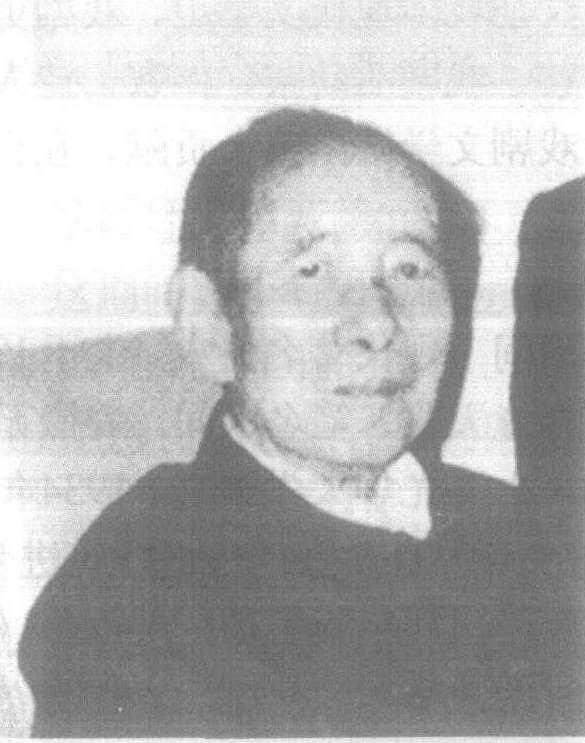艾芜1904—Ai Wu
现代小说家。原名汤道耕。四川新繁县人。早年与沙汀同在成都省立第一师范学校读书,并受到“五四”新文学思潮的影响。1925年为反抗封建包办婚姻,艾芜毅然离家出走。从1925年到1931年,他先后漂泊在云南边境和缅甸、新加坡等国的底层人民中间,度过了整整5年多的流浪生活。这段经历为艾芜的文学创作提供了特有的生活素材,使其作品为开拓中国现代文学的边地异域题材做出了独特的贡献。
1932年初,艾芜在上海加入“左联”并开始小说创作。他以早年流浪生活为题材写下大量作品,1935年出版了短篇小说集《南国之夜》和《南行记》,稍后又创作了中篇小说《芭蕉谷》和短篇小说集《夜景》、《海岛上》等。这些作品善于把写景、抒情、叙事和刻画人物揉为一体,画出一幅幅富有浓郁地方色彩和奇特风情的边地、异国图景,其中尤以《南行记》最为出色。抗战期间以及整个40年代,艾芜继续创作了大量小说,先后发表了短篇《秋收》、《纺车复活的时候》、《石青嫂子》,中篇《乡愁》、《一个女人的悲剧》和长篇《丰饶的原野》、《故乡》、《山野》等一系列很有影响的作品,此间的创作开阔了生活的视野,增强了现实主义力度。《石青嫂子》和《山野》标志着作者现实主义小说创作的成熟和新的发展。此外,艾芜还出版过散文集《漂泊杂记》(1935)、《缅甸小景》(1943)。
中华人民共和国建立后,艾芜深入生活,又创作了一批展现社会主义新生活的作品。作于1958年的长篇小说《百炼成钢》,是建国后描写现代大工业,塑造新型工人阶级群像的最早的作品之一。此外,长篇小说《春天的雾》,短篇小说《新的家》、《归家》和《南行记续篇》等作品,都从不同角度描写抒发了作者对新生活的新感受。艾芜的小说具有朴实的风格,奇异的情调,往往在现实生活的描写中倾注作者的主观感受,体现出浪漫主义的抒情色彩。因而显示出一种强烈的生命鼓动力。
艾芜
现代著名作家。生于1904年,原名汤道耕,笔名艾芜,四川新繁人。毕业于成都省立第一师范。1925年秋天,艾芜去往云南,并在《云波》杂志上发表诗歌作品。1927年,前往缅甸。在那里当过报馆校对、副刊编辑、小学教师等。1930年,流浪到新加坡等地,1931年夏天,方才回到上海。艾芜于1932年春天参加“左联”,并开始在《文学月报》上发表小说。1933年春,被国民党反动政府逮捕,半年以后方获释。抗日战争以前,艾芜就已出版有短篇小说集《南国之夜》、《南行记》、《夜景》、《海岛上》、《芭蕉谷》等,中篇小说《春天》,散文集《飘泊杂记》等。抗日战争期间,艾芜又出版了长篇小说《丰饶的原野》、《故乡》,短篇小说集《荒地》、《秋收》、《黄昏》、《冬夜》等。抗日战争胜利以后,又出版了长篇小说《山野》,中篇小说《一个女人的悲剧》、《乡愁》,短篇小说集《烟雾》、《童年的故事》、《锻炼》等,各个时期的作品均十分丰厚。新中国成立以后,艾芜曾先后出任重庆市人民政府委员兼文化局长、文联副主席、全国文联委员、中国作协理事等职。这期间虽然行政职务较多,事务性工作繁忙,但艾芜仍然笔耕不辍,解放以后主要创作有长篇小说《百炼成钢》,短篇小说集《夜归》、《南行记续篇》等,散文集《初春时节》、《浪花集》、《欧行记》等等。艾芜是我国现代文坛上具有较大影响的作家,他为中国文学事业的发展做出很大贡献。

艾芜1904~1992
作家。原名汤道耕,新繁县 (今新都) 人。中共党员。早年就读成都师范学校,1925年走云南,在 《云波》 半月刊发表新诗,从此开始文学生涯。1927年起往返漂泊于缅甸、新加坡等地,当伙计、厨工、校对、教员及编辑。1931年浪迹上海遇见沙汀,在鲁迅指导下进行文学创作。1932年参加左翼作家联盟。1932年被捕,关押半年余。这期间主要作品有 《山野》、《艾芜选集》。抗战时期在武汉、桂林从事抗战文艺创作。嗣后到重庆创作中篇小说。1948年任重庆大学中文系主任。中华人民共和国成立后历任重庆市人民政府委员、市文化局长、市文联副主席,为全国人大代表、中国文联委员、中国作协理事等。一生著作甚丰,主要有 《南行记》及续篇、《丰饶的原野》、《艾芜选集》、《故乡》、《我的青年时代》、《百炼成钢》、《高高的山上》等。
艾芜1904~1992
现当代小说家。原名汤道耕。生于四川新繁县(现已并入新都县)一小学教员家庭。曾就读于成都省立第一师范学校,深受“五四”新文化运动影响。后因反对包办婚姻离家出走,漂泊于云南边疆、新加坡、缅甸等地达5年之久。1930年冬因同情缅甸农民暴动,被殖民当局驱逐出境。1931年回国后不久即加入“左联”。抗战爆发前写有描绘西南边境乡土人情与生活风貌的《南行记》(1935),以及反映中缅两国人民的苦难与斗争的《南国之夜》 (1935) 等著名短篇集。这些作品题材新颖,语言清新明快,洋溢着浓烈的边地风味和异国情调,富于传奇色彩和浪漫气息。其中的《山峡中》描写一群盗贼的生活,揭示他们被扭曲的性格中所蕴藏的美好品质,为其代表作。抗日战争爆发后的作品,主要描写农村和知识分子生活,写有短篇小说集《秋收》、《荒地》和中篇《江上行》等。包含《春天》和《落花时节》的长篇小说《丰饶的原野》,描写岷沱流域广大农民的贫苦生活及其与地主阶级的深刻矛盾和斗争,细致地刻画了富有个性的农民形象。解放战争时期所作长篇《山野》(1948),以抗日战争为背景,描写中国南部一个小山村一天一夜抗击敌人的战斗,表现了人民群众的英勇斗争精神。中篇《一个女人的悲剧》和短篇《石青嫂子》、《都市的忧郁》、《暮夜行》等,都是这一时期的优秀作品。解放后由农村题材转向工业题材,所著长篇小说《百炼成钢》标志着其创作的新阶段。